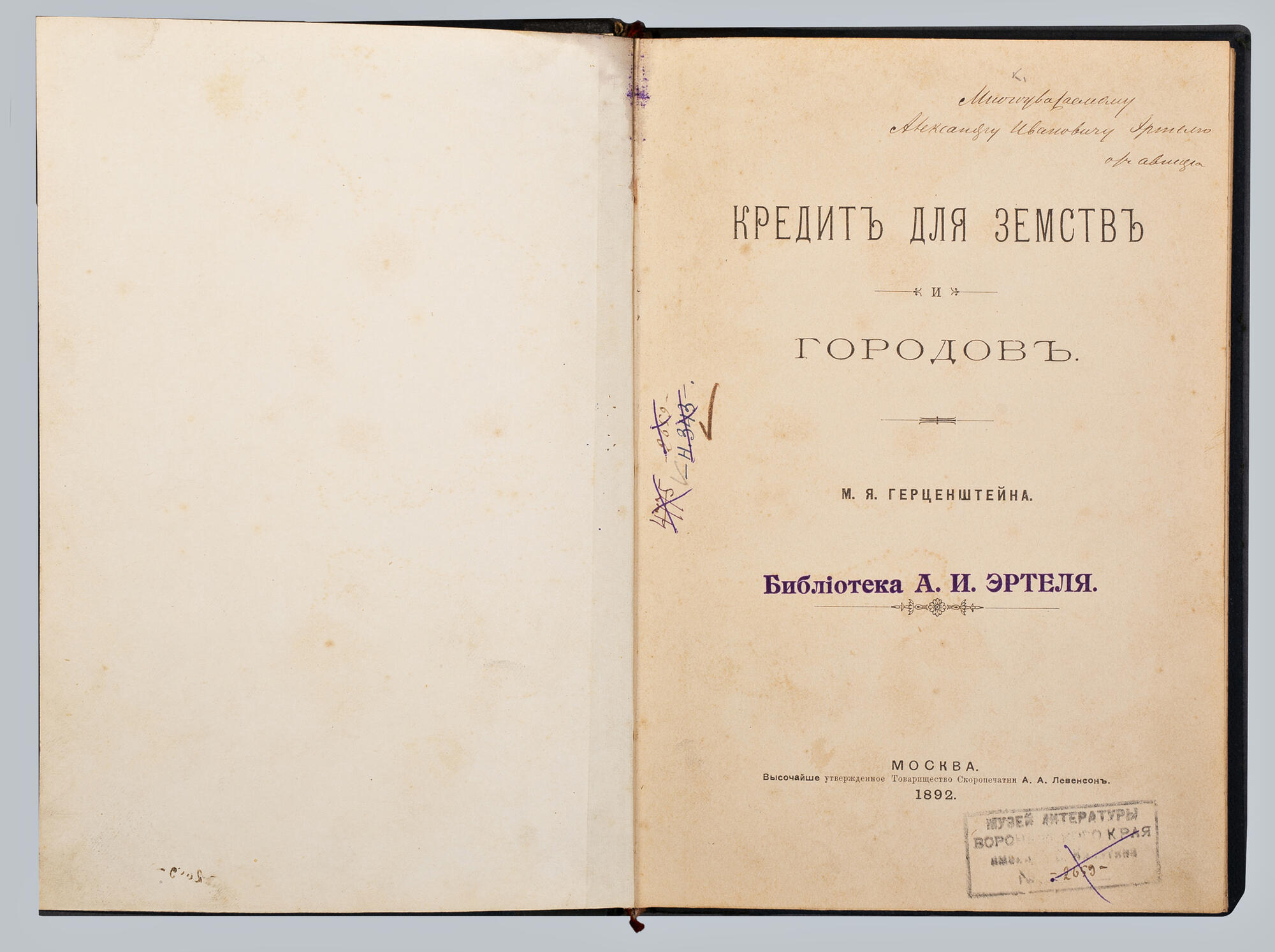The book “Credit for Zemstvos and Towns” by the scientist, politician and public figure Mikhail Yakovlevich Herzenstein was published in Moscow in 1892.
Through his work in the Moscow Land Bank, Mikhail Yakovlevich Herzenstein gained a large experience in the field of finance, credit and agrarian relations and became a well-known expert in agrarian credits. In the 1880s, the scientist published his articles on finance, credit and agrarian reforms in the Yuridicheskiy Vestnik (The Judicial Messenger), Russkiye Vedomosti (Russian Gazette) and Russkaya Mysl (Russian Mind) magazines.
Herzenstein’s first book “Credit for Zemstvos and Towns” was followed by “Mortgage Credit Reform in Germany”, “Savings Banks and Small Credits in the Works of Committees on the Needs of Agricultural Industry” and others.
The questions raised by the Zemstvo Reform on improving the situation of peasants and solving the agrarian issues worried the intellectuals of Russian society and were reflected in the literature of those years. They received a great deal of focus in the works by writers of the Narodnik movement.
The zemstvo question runs through all of Alexander Ertel’s works. His characters talk about zemstvo, try to get on the zemstvo committee and contribute to improving the situation of the Russian village, place their hopes on the zemstvo reforms and, when faced with reality, are often deeply disappointed, as they fully grasp the imperfection of the life system that resulted from these reforms.
Thus, Serafim Yozhikov, the main character of the eponymous story from the cycle “Notes of a Steppe-Dweller”, talks to the cycle’s protagonist Nikolay Baturin about how to benefit peasants in the village and asks him,



